ATL Receives the Highwire Gold Safety Award!
ATL is receiving the Highwire Gold Safety Award for Safest Contractors & Vendors for 2024!
ATL is receiving the Highwire Gold Safety Award for Safest Contractors & Vendors for 2024!
ATL has received the Associated General Contractors of New York State (AGC NYS) Safety Excellence Award!
ATL is receiving the Highwire Gold Safety Award for Safest Contractors & Vendors for 2023!
ATL is receiving the Highwire Gold Safety Award! Highwire is a safety software company that allows contracting partners to engage with intelligent assessments, collaborate on risk mitigation plans, and review objective performance data to consistently learn and improve.
Concrete is a common building and structural component that can be impacted by exposure to fire. Concrete is fairly heat resistant to approximately 500 to 600 °F. Once concrete reaches that range of temperature or beyond, damage can occur. Rapid cooling, which can occur during firefighting activities, can also adversely affect the concrete by creating thermal shock. Fire-exposed concrete can be evaluated by several methods: including visual examination of cracks, spalls, or color changes; extraction of core samples to evaluate concrete strength or perform petrographic analysis for microscopic evidence of damage; and/or evaluation through nondestructive means such as ultrasonic pulse velocity (UPV) testing, discussed further below.
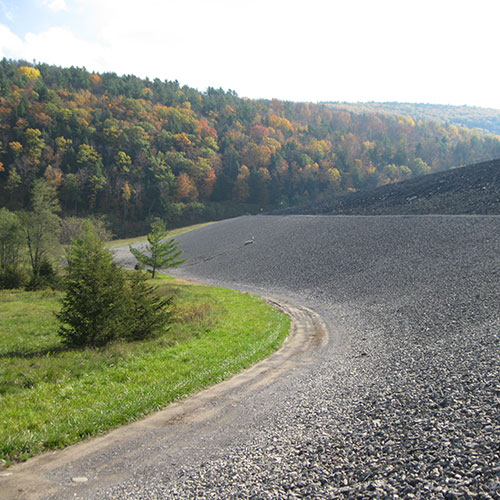
St. Lawrence/FDR Power Project Instrumentation Rehabilitation
Massena, NY
GZA Environmental of NY
New York Power Authority
This project involved the rehabilitation of geotechnical instrumentation of the earthen dikes at the New York Power Authority St. Lawrence/FDR Power Project in Massena, NY.
ATL provided subsurface investigation services, and replaced and decommissioned the earthen dam instrumentation.
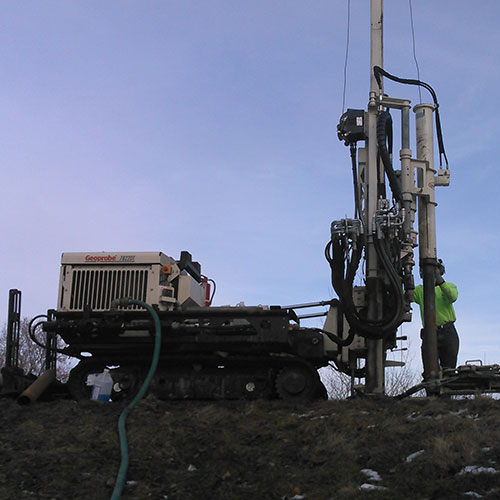
Mirror Lake Dam
Herkimer, NY
Bergmann Associates
ATL provided subsurface investigation services, rock coring, well monitoring, piezometer installation, and laboratory analysis.
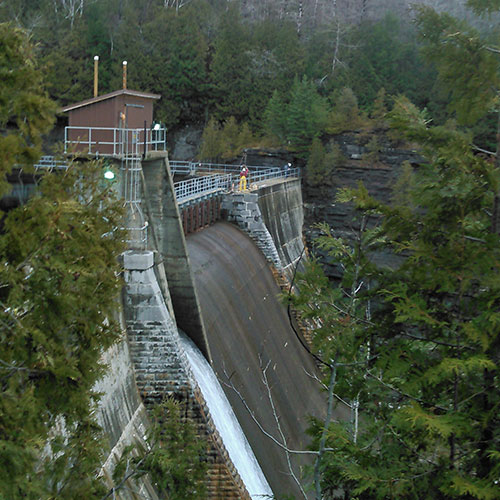
Trenton Falls Dam
Barneveld, NY
Brookfield Power
ATL advanced concrete cores at the crest and toe of the dam, and installed vibrating wire piezometers in each core hole.

Albany Capital Center
Albany, NY
Jersen Construction Group
Albany Convention Center Authority
This project involved the construction of the new Albany Capital Center, an 80,000 square-foot glass-accentuated convention, ballroom, and meeting space with on-site parking and direct connections to the Empire State Plaza, The Egg performing Arts Center, the Renaissance Hotel by Marriott, and the Times Union Center arena via enclosed walkways.
ATL provided dynamic pile testing, construction materials engineering and testing, vibration monitoring, and pre-condition building survey services.
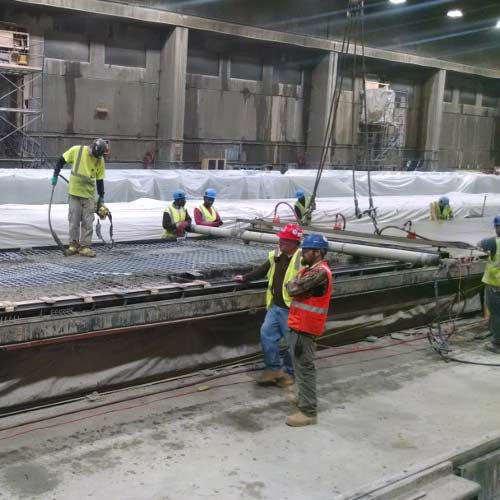
LaGuardia Airport
East Elmhurts, NY
TRC Solutions (CALTROP)
ATL provided prestressed concrete quality assurance/quality control services, as well as Rapid Chloride Ion testing of concrete specimens.
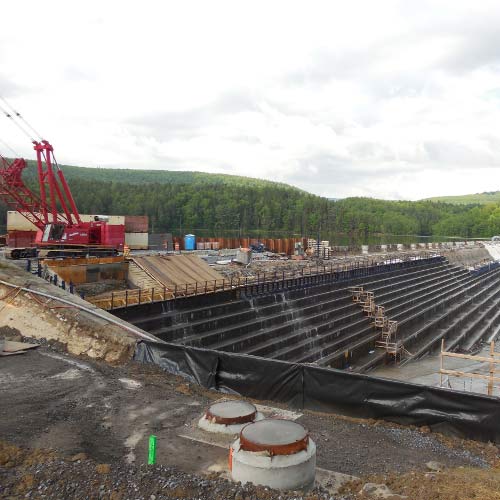
Gilboa Dam Reconstruction
Gilboa, NY
HAKS
Schoharie Reservoir
Projects consisted of the first, second, and third phases of reconstruction of the Gilboa Dam for the Schoharie Reservoir, a New York City Department of Environmental Protection (NYCDEP) watershed in the Catskill District.
ATL provided construction materials engineering and testing services, nondestructive testing services, and concrete mix design verification.

Rochester Station
Rochester, NY
Popli Design Group
Amtrak
This $29.8 million project included the design and construction of a new larger rail station at 320 Central Ave. in Rochester, NY.
ATL provided construction materials engineering and testing and dynamic pile testing services.
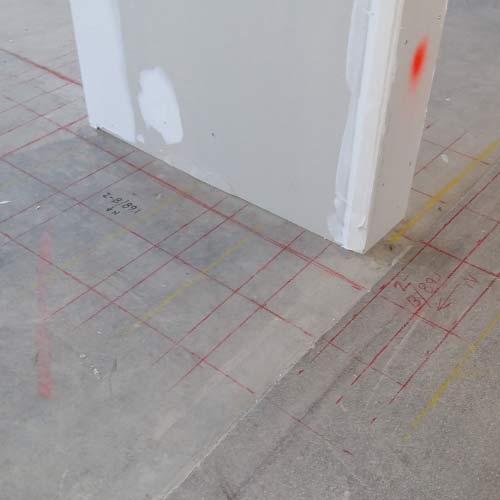
US Military Academy West Point MacArthur Barracks
West Point, NY
Lupini Construction
US Military Academy West Point
This $50,000,000 project consisted of the strengthening of the elevated slabs in the MacArthur Long Barracks.
ATL provided ground penetrating radar (GPR) services and construction quality control services during the installation of post-installed punching shear reinforcement elements.
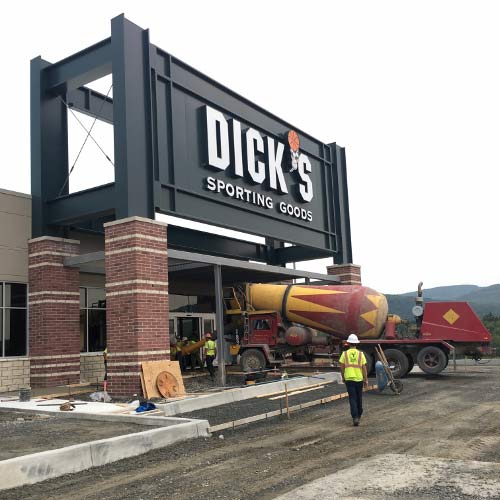
Dick’s Sporting Goods Distribution Center
Conklin, NY
H&M Design
This project consisted of the construction of a 923,000 square foot state-of-the-art distribution center in the Broome Corporate Park in Conklin, NY. It is Dick’s Sporting Goods largest distribution center serving the entire north east.
ATL provided geotechnical engineering, piezometer installation, HMA density testing, stormwater monitoring, and special inspection of soils, concrete, and steel.

Lago Resort & Casino
Tyre, NY
Wilmorite
Wilmorite
This $425 million project off the New York State Thruway (Exit 41) included a 94,000 sq.ft. casino, 207-room hotel, 10,000 sq.ft. spa, 40,000 sq.ft. indoor pool area, and multiple restaurants and lounges. The casino features 2,000 slot machines and 85 gaming tables.
ATL provided geotechnical engineering, ultrasonic steel testing (NDT services), post-tensioning inspection, and special inspection and testing of soils, concrete, masonry, steel, and fire proofing.
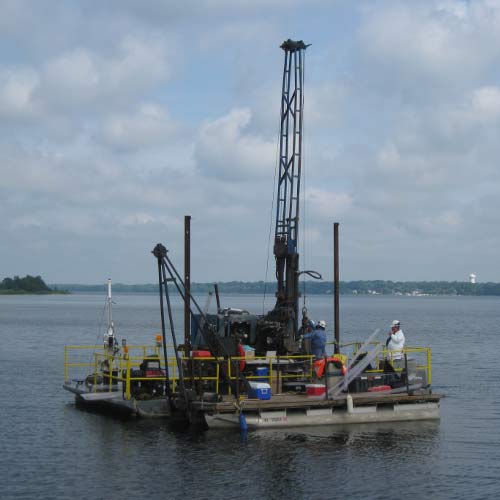
Onondaga Lake Remediation
Syracuse, NY
Parsons
Over the past 125 years, the sediments and waters in and around Onondaga Lake in Syracuse have been contaminated with a wide variety of industrial contaminants and municipal sewage waste, including mercury, PCBs, pesticides, heavy metals and VOCs. Parsons Engineering was contracted by Honeywell to design and implement their remediation project. ATL has in turn been subcontracted by Parsons from 2005 through the present to perform a multitude of tasks in assistance with the remediation.
ATL provided water-based investigations, vibracore sampling, subsurface investigations, and carbon content verification by thermal destruction.
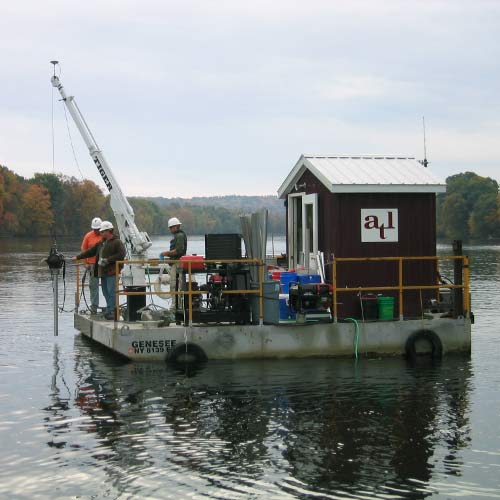
Hudson River Sediment Sampling
Fort Edward, NY
General Electric
ATL supplied three sediment sampling vessels and crews to collect approximately 5,000 sediment samples from the bed of the Hudson River, extending from Fort Edward, NY to Troy, NY.
ATL provided water-based investigations and vibracore sampling.
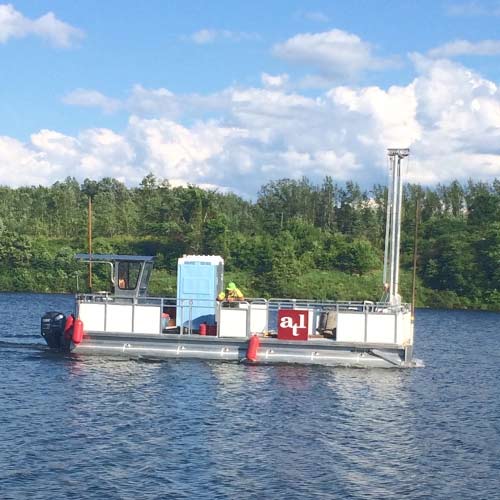
Grasse River Remediation
Massena, NY
ALCOA
ATL provided water-based investigations and subsurface investigations.
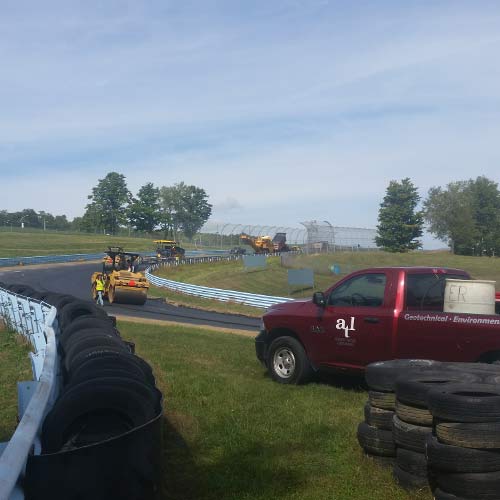
Watkins Glen
Watkins Glens, NY
AJAX Paving Industries
ATL provided quality control testing of hot mix asphalt placement, compaction testing of soil and aggregate subbase, and laboratory analysis of construction materials.
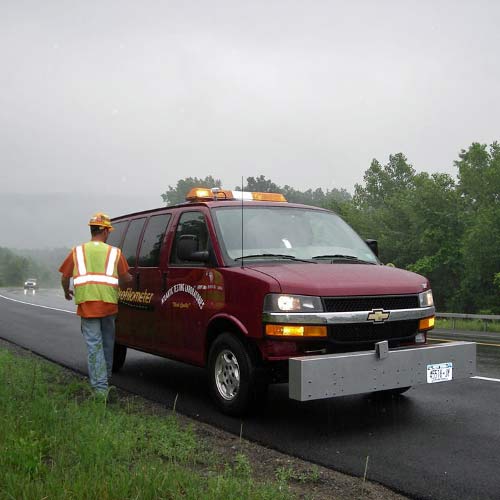
NYSTA Utica to Verona Paving
Utica, NY
Hanson Aggregates
New York State Thruway Authority
ATL provided hot mix asphalt density testing, coring of hot mix asphalt, surface smoothness testing, and concrete testing.
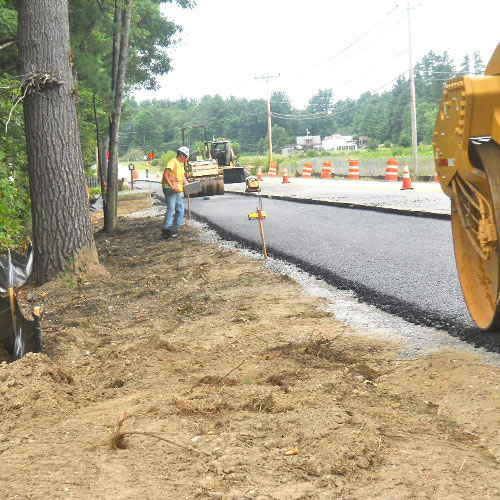
Route 10 Caroga Lake
Caroga Lake, NY
Hanson Aggregates
ATL provided quality control testing of hot mix asphalt placement, and coring of in-place hot mix asphalt.
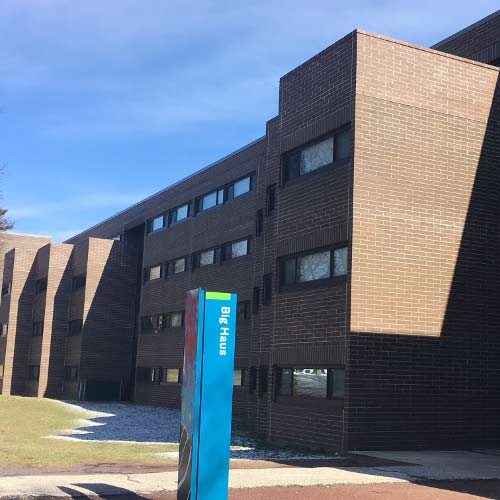
SUNY Purchase Big Haus Phase V
Purchase, NY
DASNY
SUNY Purchase
ATL provided asbestos project monitoring, asbestos bulk sampling, and mold project monitoring.
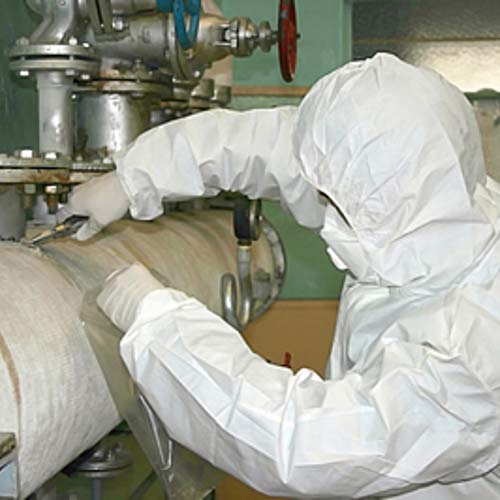
SUNY Albany
Albany, NY
Cannon Design
SUNY Albany
ATL provided asbestos project monitoring, asbestos bulk sampling, and PCB sampling and analysis.
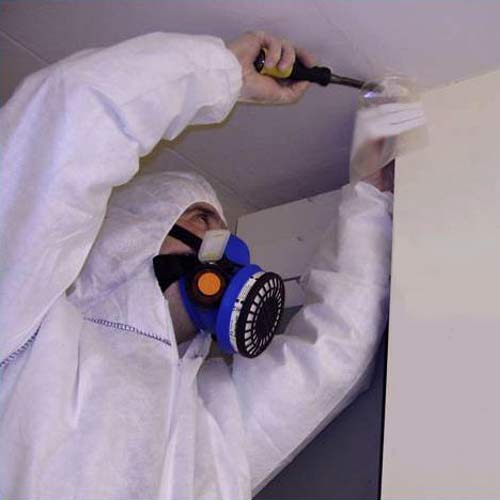
Schenectady City School District Central Park MS Phase 1B
Schenectady, NY
Turner Construction
Schenectady City School District
ATL provided asbestos bulk sampling and analysis.
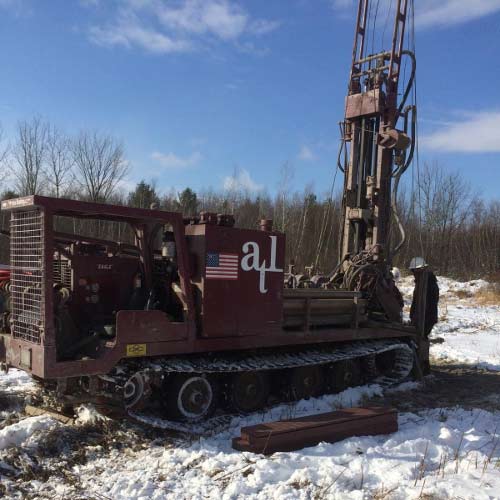
Whiteface Mountain Lodge Expansion
Wilmington, NY
Olympic Regional Development Authority
Olympic Regional Development Authority
ATL provided subsurface investigations, laboratory analysis, and a geotechnical evaluation and report.
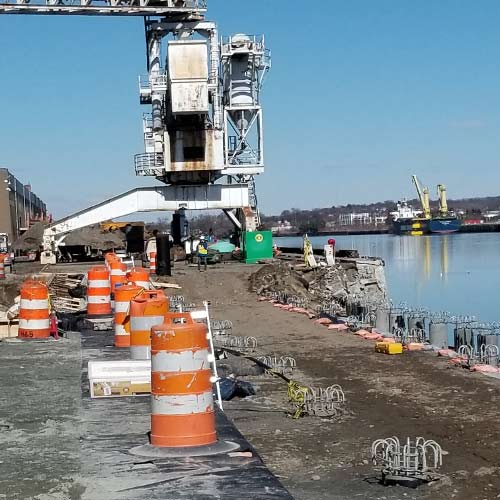
Big Lift Warehouse
Port of Albany, NY
Albany Port District Commission
Albany Port District Commission
ATL provided subsurface investigations, laboratory analysis, and a geotechnical evaluation and report.
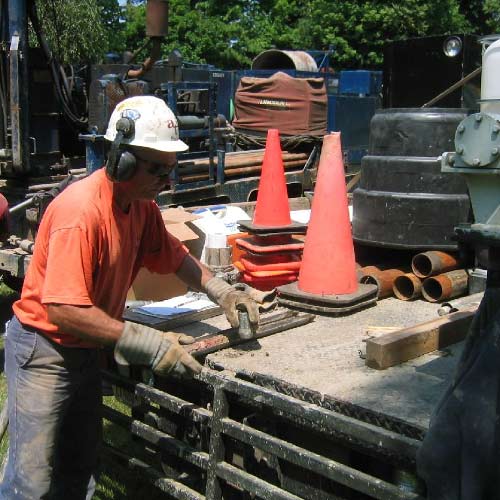
Central NY Welcome Center
Auburn, NY
nArchitects
ATL provided geotechnical evaluation, subsurface investigations, and laboratory analysis services.
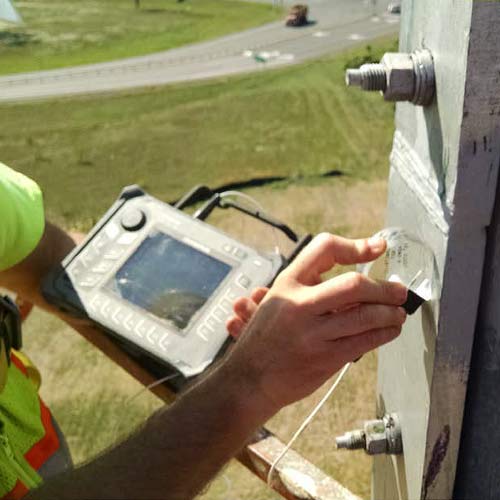
Exit 36 Tower Ultrasonic Evaluations
Syracuse, NY
Patriot Enterprises
ATL performed weld and structural steel testing.
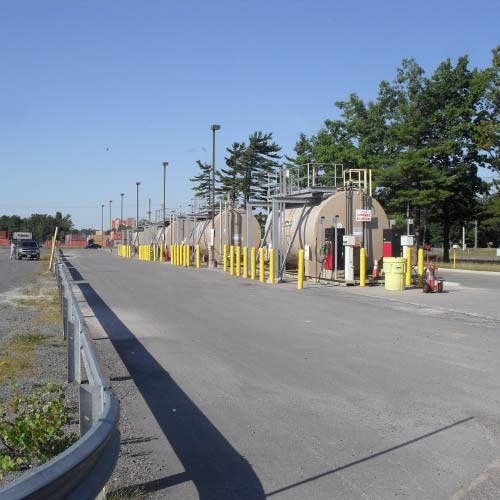
Arconic Petroleum Aboveground Storage Tank Testing
Massena, NY
Arconic
Arconic
ATL performed magnetic particle testing in accordance with ASTM E 709-08, and pulse-echo ultrasonic testing in accordance with ASTM E 797-10.
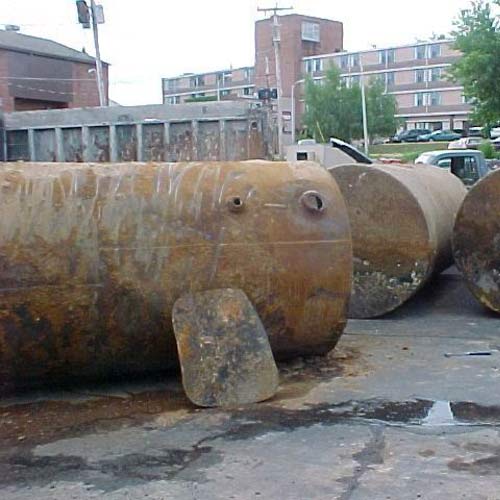
Petroleum Underground Storage Tank Testing
Greece, NY
LCS
ATL performed a tank tightness test on one 300-gallon underground storage tank.
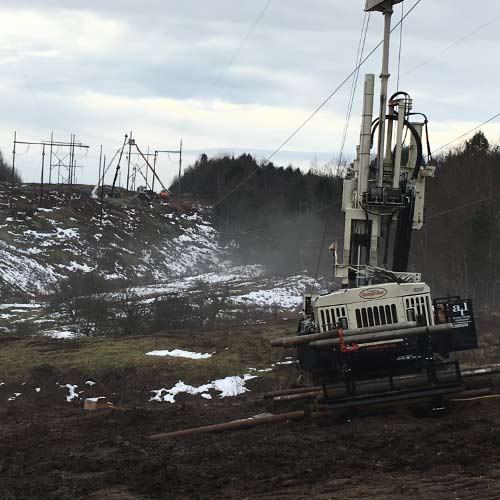
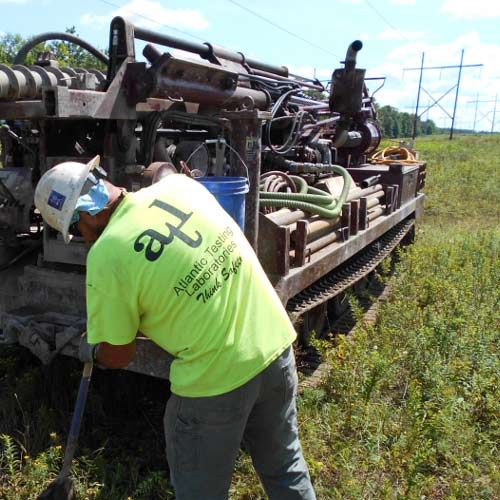
NYPA Smart Path Transmission Line
St. Lawrence & Lewis Counties
Burns & McDonnell
New York Power Authority
The New York Power Authority contracted to engineer, design, and permit the rebuild of the 86 mile long Moses Adirondack transmission line. The design will replace the over 800 wooden transmission towers and provide system reliability.
ATL provided geotechnical investigations to support the design of the replacement transmission towers. ATL performed 850 soil borings to depths of 30-50’, and performed soil resistivity testing at each boring location. ATL also provided soil laboratory analysis from the samples obtained during the investigations.
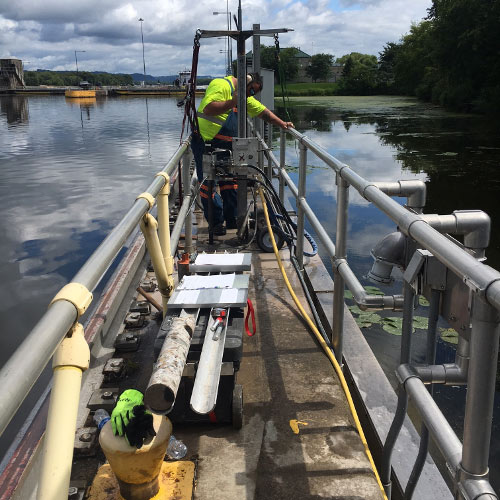
USACE Lock & Dam Concrete Investigation
Minnesota & Wisconsin
Agapito Associates
U.S. Army Corps of Engineers
The purpose of the USACE study was to investigate and evaluate the interior concrete condition of the upper guide walls within five hydraulic concrete lock structures (Lock Nos. 4, 5, 5A, 8, and 9) along the Mississippi River in Minnesota and Wisconsin within the St. Paul District, United States Army Corps of Engineers. A total of 25 concrete core samples were submitted for this study; 10 for full petrographic and air void analysis (two of each from each Lock), and 15 for compression testing (three of each from each Lock).
ATL provided petrographic analysis (ASTM C 457 and ASTM C 856) and compression strength testing (ASTM C 42/39) of the concrete cores that were obtained from the concrete lock structures.
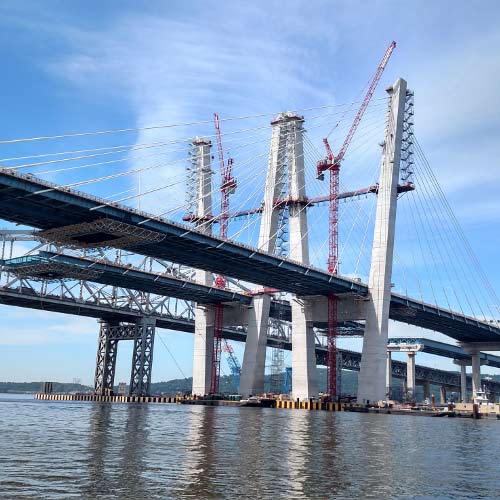
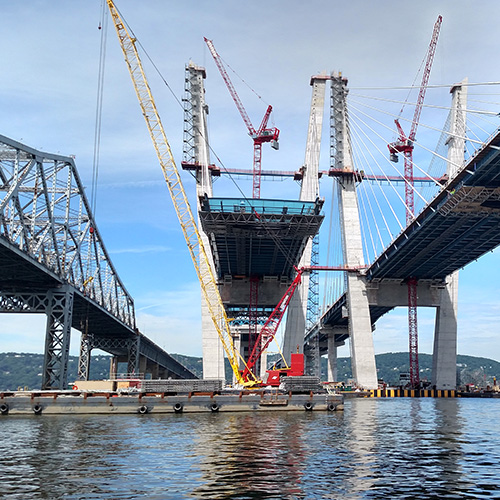
Tappan Zee Bridge
Tarrytown, NY
Tappan Zee Constructors
New York State Thruway Authority
NYSTA replaced the 3.1 mile Tappan Zee Bridge with a twin span cable stay bridge connecting Rockland and Westchester counties. The $3.98 billion bridge is one of the largest design build contracts for a transportation project in the United States. New approaches, toll plazas, state facilities, and a shared use path were also installed.
ATL provided quality assurance testing of the concrete and soil materials that were utilized on the project. An AASHTO accredited lab was setup on site to provide immediate test results as requested.
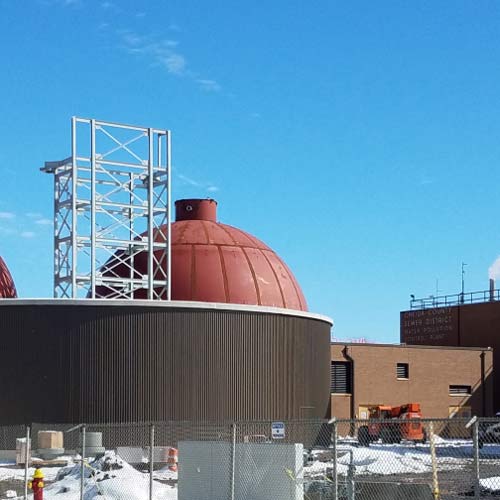
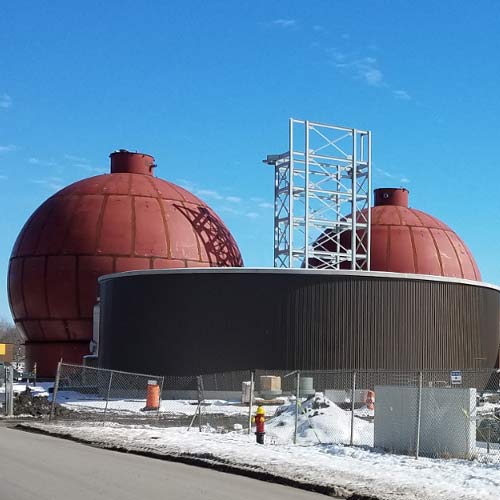
Oneida County Water Pollution Control Plant
Utica, NY
GHD Consulting Services
Oneida County Sewer District
The 60 year old Oneida County Water Pollution Control Plant began a 5 year improvement project in 2016. The project consisted of new anaerobic digesters, methane gas conversion, upgrades to several pump stations, and waste treatment process improvements.
ATL provided hazardous material survey, abatement design, and project monitoring during the renovation phases of the project. ATL also provided construction materials testing and special inspections of soil, concrete, masonry, and structural steel during the new construction.
Get updates from ATL to keep up to date with the work and location we service.
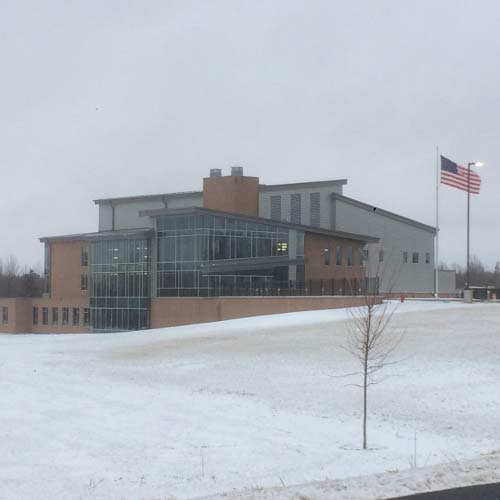
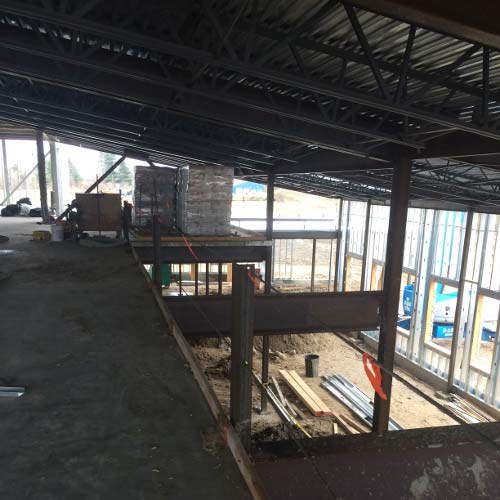
St. Lawrence Health System Ambulatory Surgery Center
Canton, NY
St. Lawrence Health System
St. Lawrence Health System
This was a $23 million dollar Medical Office Building and Ambulatory Surgery Center. Prior to starting construction the Canton drilling division was retained to perform subsurface investigation of the site, and continued performing duties as the geotechnical engineer of record during construction.
At vero eos et accusamus et iusto odio dignissimos ducimus qui blanditiis praesentium voluptatum deleniti atque corrupti quos dolores et quas molestias excepturi sint occaecati cupiditate non provident, similique sunt in culpa qui officia deserunt mollitia animi, id est laborum et dolorum fuga. Et harum quidem rerum facilis est et expedita distinctio. Nam libero tempore, cum soluta nobis est eligendi optio cumque nihil impedit quo minus id quod maxime placeat facere possimus, omnis voluptas assumenda est, omnis dolor repellendus. Temporibus autem quibusdam et aut officiis debitis aut rerum necessitatibus saepe eveniet ut et voluptates repudiandae sint et molestiae non recusandae. Itaque earum rerum hic tenetur a sapiente delectus, ut aut reiciendis voluptatibus maiores alias consequatur aut perferendis doloribus asperiores repellat.
At vero eos et accusamus et iusto odio dignissimos ducimus qui blanditiis praesentium voluptatum deleniti atque corrupti quos dolores et quas molestias excepturi sint occaecati cupiditate non provident, similique sunt in culpa qui officia deserunt mollitia animi, id est laborum et dolorum fuga. Et harum quidem rerum facilis est et expedita distinctio. Nam libero tempore, cum soluta nobis est eligendi optio cumque nihil impedit quo minus id quod maxime placeat facere possimus, omnis voluptas assumenda est, omnis dolor repellendus. Temporibus autem quibusdam et aut officiis debitis aut rerum necessitatibus saepe eveniet ut et voluptates repudiandae sint et molestiae non recusandae. Itaque earum rerum hic tenetur a sapiente delectus, ut aut reiciendis voluptatibus maiores alias consequatur aut perferendis doloribus asperiores repellat.
At vero eos et accusamus et iusto odio dignissimos ducimus qui blanditiis praesentium voluptatum deleniti atque corrupti quos dolores et quas molestias excepturi sint occaecati cupiditate non provident, similique sunt in culpa qui officia deserunt mollitia animi, id est laborum et dolorum fuga. Et harum quidem rerum facilis est et expedita distinctio. Nam libero tempore, cum soluta nobis est eligendi optio cumque nihil impedit quo minus id quod maxime placeat facere possimus, omnis voluptas assumenda est, omnis dolor repellendus. Temporibus autem quibusdam et aut officiis debitis aut rerum necessitatibus saepe eveniet ut et voluptates repudiandae sint et molestiae non recusandae. Itaque earum rerum hic tenetur a sapiente delectus, ut aut reiciendis voluptatibus maiores alias consequatur aut perferendis doloribus asperiores repellat.
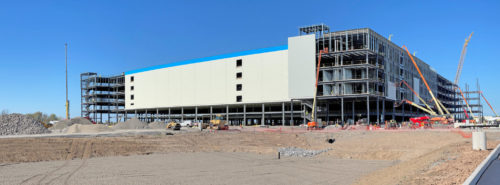
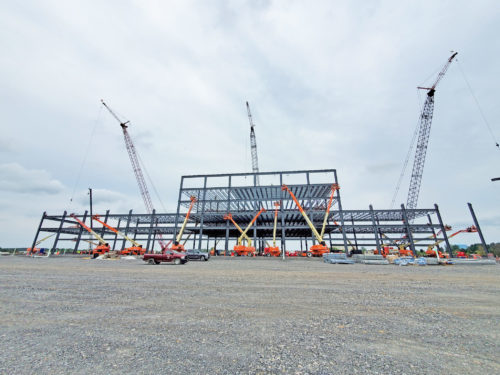
Amazon Warehouse & Distribution Centers
Clay, NY & Gates, NY
TC Syracuse Development Associates & TC Rochester Associates
Trammell Crow Company
ATL worked on two Amazon Distribution Centers, one $350M dollar, 3.8 million square foot warehouse in Clay, NY and one $280M dollar, 2.6 million square foot warehouse in Gates, NY.
ATL performed special inspection and construction materials testing services. Geotechnical services were performed to monitor the cut/fill operation, and to monitor the installation of the stone columns and bearing grade inspection at footing excavations.
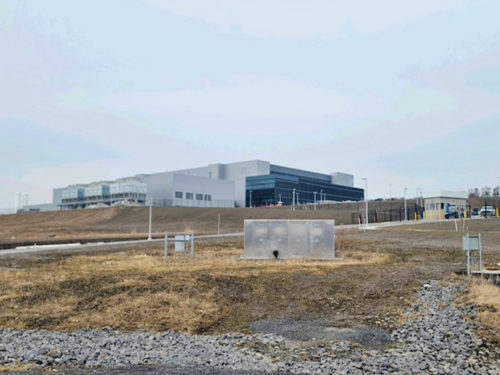
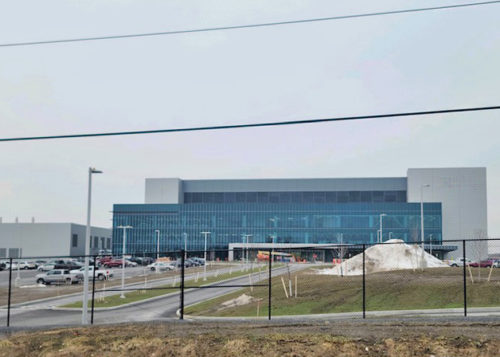
Computer Chip Fab Project
Marcy, NY
Private
Private
This project consisted of a new 458,000 square-foot FAB/ADMIN structure, a 98,000 square-foot CUB structure, and sitework including new sidewalks, access roads, and parking lots.
ATL provided construction materials engineering and testing services and special inspection services including concrete, fireproofing, geotechnical, masonry, soil, and steel.
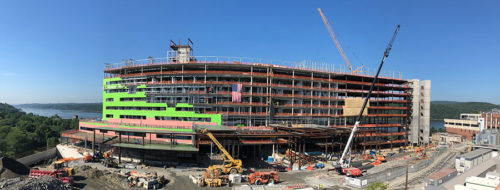
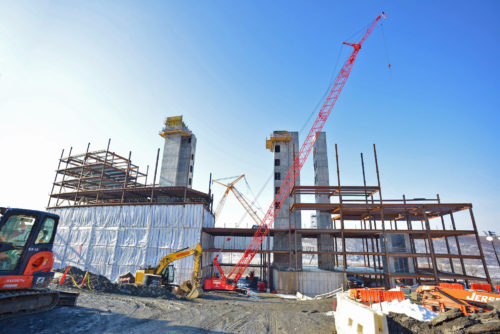
Vassar Brothers Medical Center Patient Pavilion
Poughkeepsie, NY
Vassar Brothers Medical Center
Vassar Brothers Medical Center
This project consisted of a 696,000 square foot, eight story patient pavilion addition to the existing Vassar Brothers Medical Center.
ATL provided special inspections and construction materials engineering and testing of soil, concrete, masonry, steel, and fireproofing. ATL also provided petrographic, mineralogic, x-ray, and chemical analysis of bedrock samples.